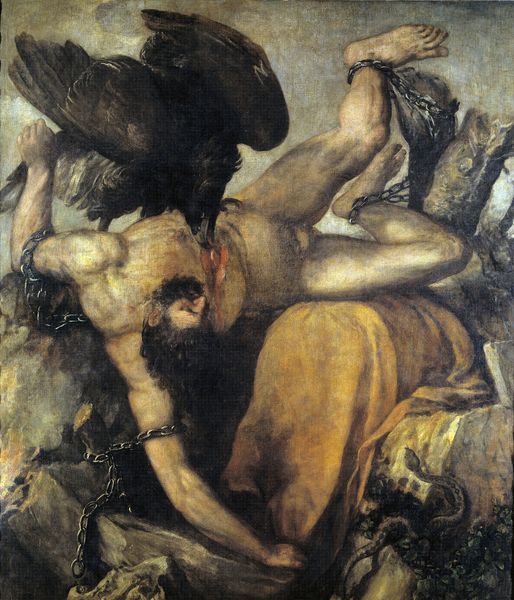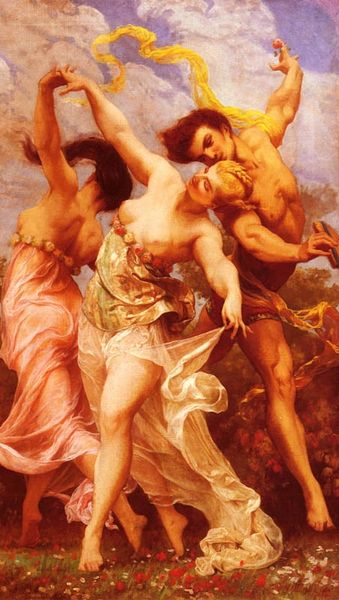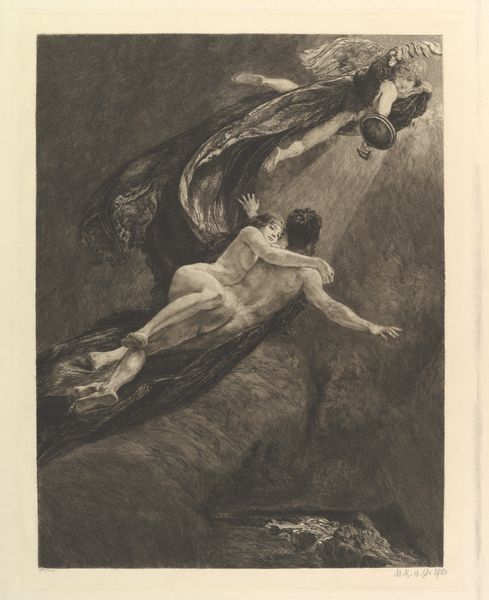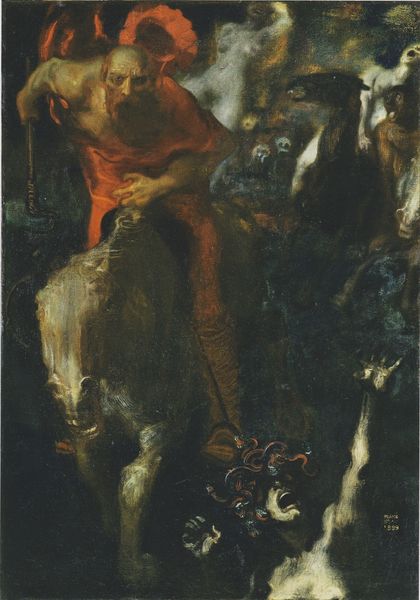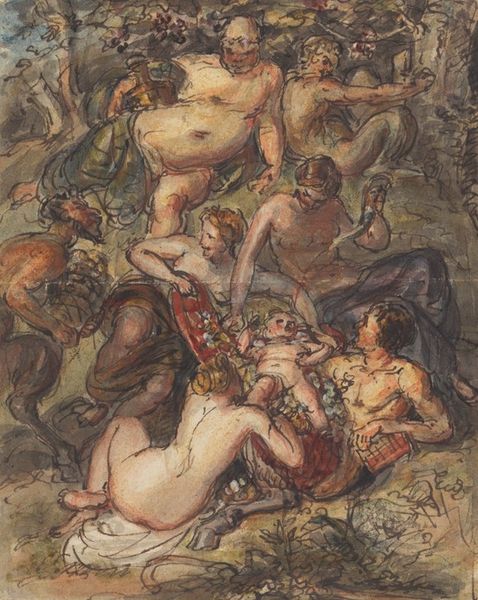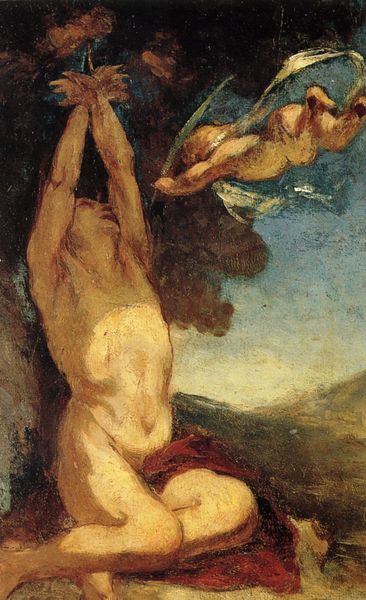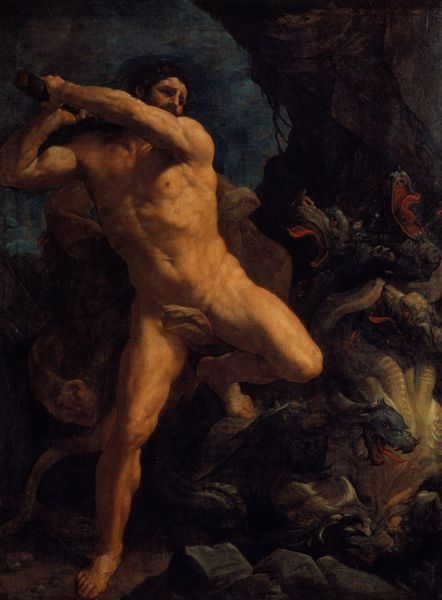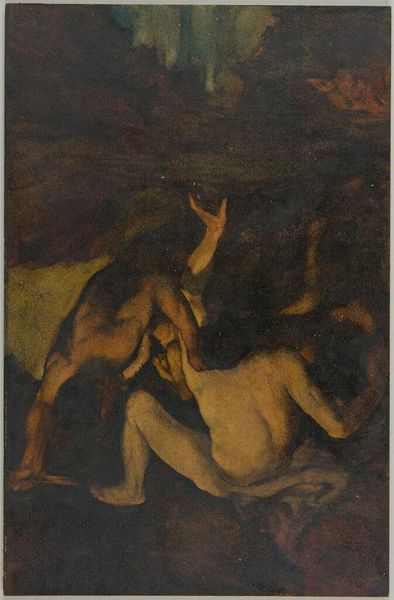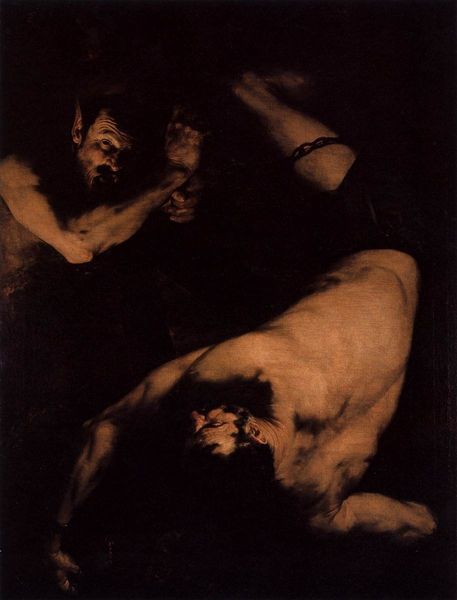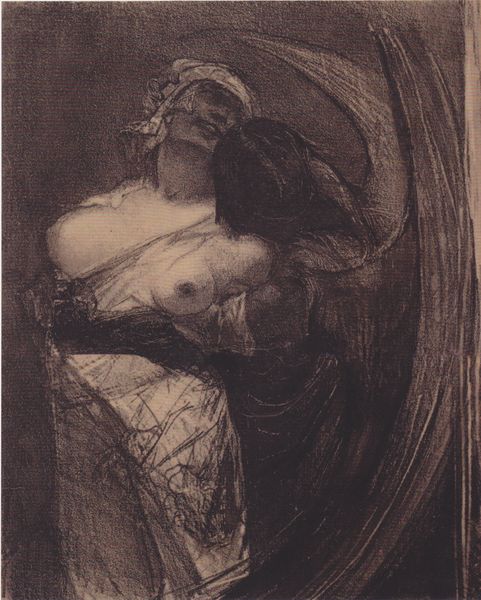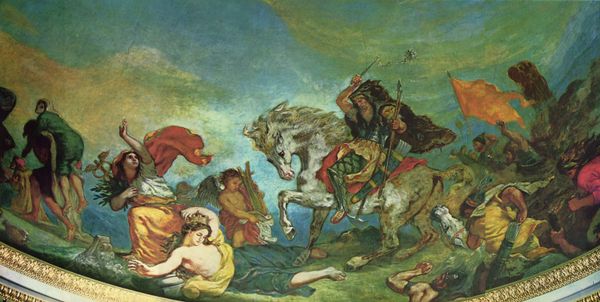
painting, oil-paint
#
gouache
#
allegory
#
painting
#
oil-paint
#
figuration
#
oil painting
#
roman-mythology
#
expressionism
#
mythology
#
symbolism
#
history-painting
#
expressionist
Dimensions: 229 x 207 cm
Copyright: Public domain
Curator: We’re looking at Franz von Stuck's compelling 1905 oil painting, "Orestes and the Erinyes." Editor: My immediate sense is anxiety. A swirling, claustrophobic space, dominated by shadowy forms pressing in on the central figure. It's unsettling. Curator: Indeed. The painting depicts Orestes, a figure from Greek mythology, fleeing from the Erinyes or Furies—avenging deities who pursue those guilty of crimes against blood relatives. Editor: These women, rendered almost monstrously, become symbols of relentless patriarchal forces and the constraints imposed upon individuals caught within cycles of vengeance. Note their grotesque expressions and contorted postures, emphasizing psychological torment as a manifestation of social control. Curator: Structurally, the dark palette and dramatic lighting accentuate the chaotic energy of the scene. The swirling brushstrokes add to the disorienting effect, mirroring Orestes' mental state. The almost monochromatic background focuses the viewers attention immediately upon Orestes and the Furies. Editor: And Orestes is such a tragic figure. He killed his mother Clytemnestra, to avenge his father Agamemnon, making him, in a way, a product of circumstance. This work emphasizes inherited trauma and societal expectations which is mirrored in Orestes’ frantic attempt to evade retribution, evoking a deeper questioning of agency and responsibility. Curator: Looking at the composition, notice how the artist uses a diagonal axis to direct the eye. Orestes is placed lower in the composition, emphasizing his vulnerability. The Furies loom above, suggesting their inescapable power. Editor: It prompts us to think critically about themes such as guilt, justice, and the persecution of individuals who transgress societal norms. Are the Furies truly dispensing justice, or are they perpetuating a system of oppression and revenge? This piece speaks volumes about how patriarchal norms operate, especially for marginalized individuals or women within complex moral landscapes. Curator: Agreed, and in Stuck's execution we witness a fusion of classical subject matter and modernist sensibility, evident in his evocative manipulation of form and emotional intensity. It's an interesting interpretation of an age-old tale, one that resonates with audiences even today. Editor: Absolutely, seeing this work reminds me that it's important to examine artworks as mirrors reflecting society's deepest values and ongoing struggles, inviting conversation about justice and accountability.
Comments
No comments
Be the first to comment and join the conversation on the ultimate creative platform.
